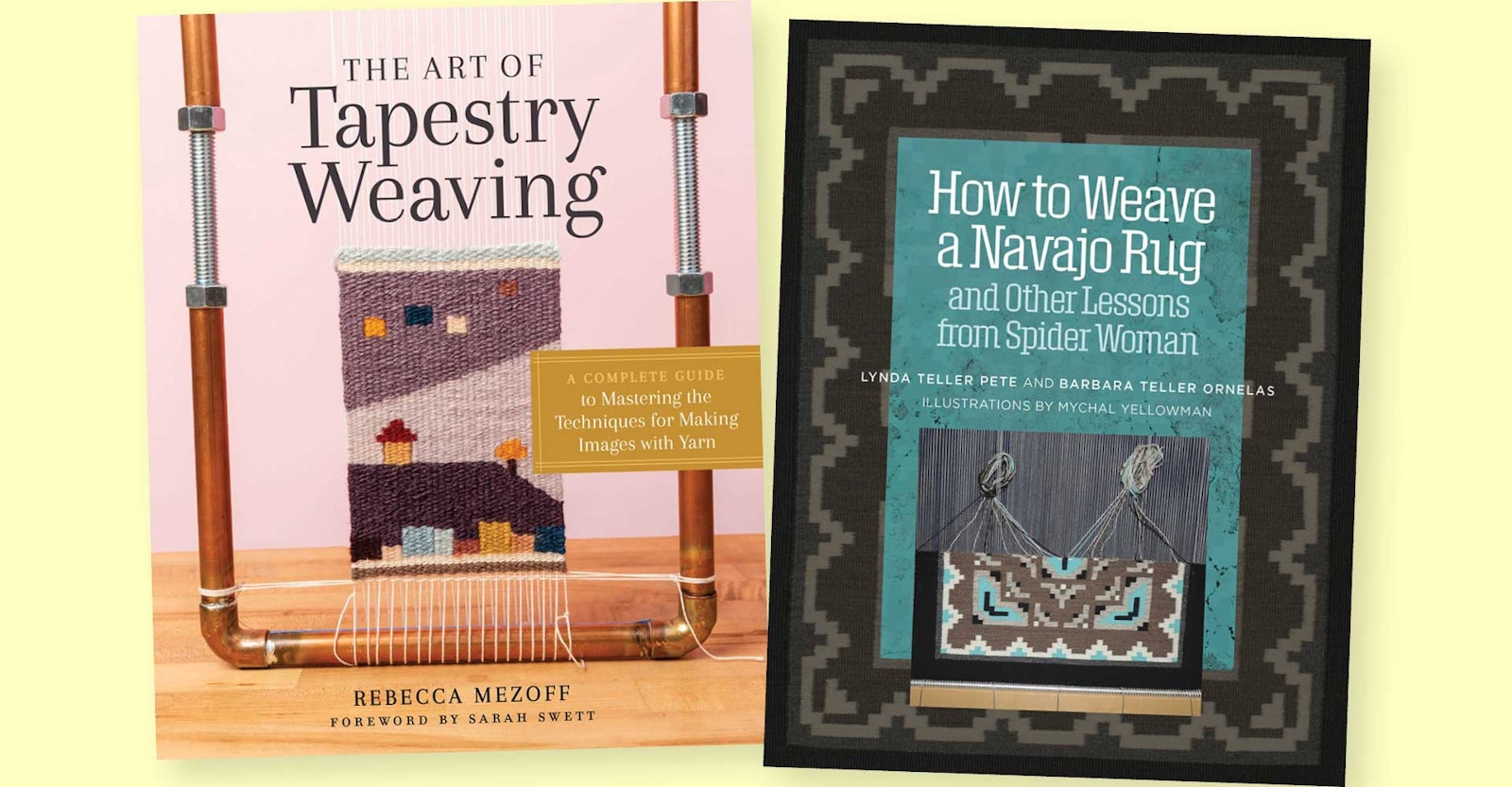THE ART OF TAPESTRY WEAVING: A Complete Guide to Mastering the Techniques for Making Images with Yarn
Rebecca Mezoff
Have you ever looked upon a tapestry in awe of the imagery created in yarn and the skill of the weaver who accomplished it?
The magic of this art form is revealed by tapestry artist, teacher, and author Rebecca Mezoff in the new release The Art of Tapestry Weaving. In her pages, tapestry is both a fine art and an accessible craft. Mezoff has taken years of experience teaching thousands of students and refined it into a thorough, clear, and methodical approach to the art and craft of making tapestry. Like all the best instructors, she gives the new weaver permission to weave less than perfectly when starting out, provides a solid foundation of technique, and encourages weavers to explore.
Mezoff provides expert guidance throughout the whole process from choosing equipment and yarns to handling finished work; she even includes plans for building a simple pipe loom. She delves into color theory and design with wisdom tailored to this particular medium. The heart of the book goes into great detail on technique, with numerous photographs, clear descriptions, and many samples illustrating how varying one property—sett, yarn size, weft placement, etc.—affects the finished piece. She shows how to create color boundaries, blend colors, achieve transparency, and smooth out curves. Images of complete artistic works are sprinkled throughout, giving examples of the principles in play and offering inspiration. The collection will satisfy the detail-oriented technical weaver and the conceptual artist. The Art of Tapestry Weaving will be a most welcome guide to aspiring and continuing tapestry weavers.
If you’ll excuse me, my tapestry loom is waiting. . . .
—Angela Schneider
North Adams, Massachusetts: Storey Publishing, 2020. Hardcover, 320 pages, $35.00. ISBN 9781635861358.
HOW TO WEAVE A NAVAJO RUG AND OTHER LESSONS FROM SPIDER WOMAN
Lynda Teller Pete and Barbara Teller Ornelas
Full disclosure: I am a weaver but not a tapestry weaver. That means I’m not a Navajo rug weaver either. That’s by choice, having tried it. I decided it was too demanding for me and requires skills I understand but barely have. And so I truly appreciate those who do that type of weaving and the rugs that have grown from those skills. There is a reason that Navajo rugs set the gold standard for fine weaving, and reading How to Weave a Navajo Rug and Other Lessons from Spider Woman helps to understand how that came about.
For me, there are three main elements to the Teller sisters’ telling of the story. First, of course, is the actual description of how to weave a Navajo rug. From building a small loom to cutting the final corner fringes, the instructions are there. Second could be called “The Devil Is in the Details.” Things like a Navajo spindle should be made according to the size of the person who will be doing the spinning, a ¼-inch variation in weaving width is considered major, wool that has been dyed black packs in differently from undyed wool, overlap the ends and beginnings of weft only ½ inch, use three different beaters for three different sections of the rug—all these and more are details that make the difference between an okay rug and a great rug. And finally, but really first, is the spiritual component of weaving a rug, which is every bit as important as the physical elements. Perhaps this is the clearest evidence that this book was written by two Navajo women, women for whom every moment of the weaving process is holy.
I love the history. It begins with, “I researched several books about Navajo weaving . . . written by non-Navajo anthropologists and ethnographers,” followed by, “Skimming through these books left me bewildered and exasperated,” and finally, after consulting with many other Navajos, family and not, the conclusion: “What I know to be true is what we learned from our grandparents about Navajo history, economics, worldview, politics, environmental issues, social issues, animal husbandry, planting and harvesting seasons, language, spirituality, culture, tradition, and weaving.” And from there, we get a full overview of the history of the Navajo, from the beginning of time through the colonization by the Spanish and the new “American government.” It’s a good history, one you are not likely to have learned in school.
As a weaver, I am glad to have read the book for the technical weaving basics it taught me. As a student of cultures, I am enriched by knowing more of Spider Woman and her descendants. And as a lover of any spiritual assistance we mere humans can draw upon, I love knowing that the weaving day begins with prayers and song, that the parts of the loom as well as the weaving processes are named for male and female and a balance of nature, and that all of that leads to Hózhó, the Beauty Way.
—Deborah Chandler
Loveland, Colorado: Thrums Books, 2020. Spiralbound, 152 pages, $29.95. ISBN 9781734421705.

